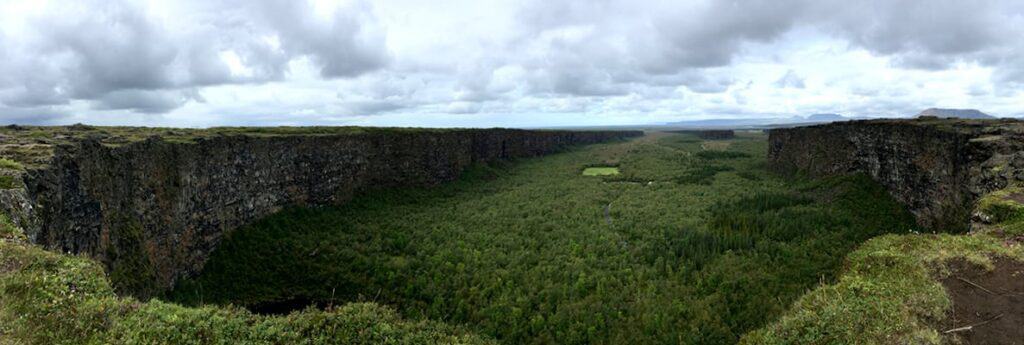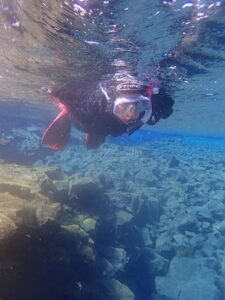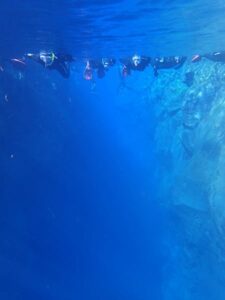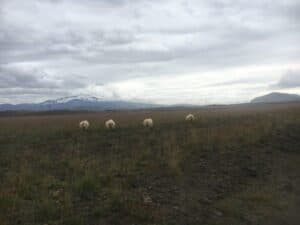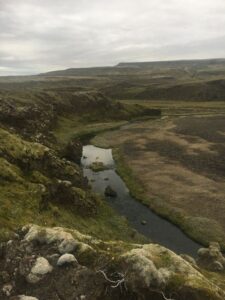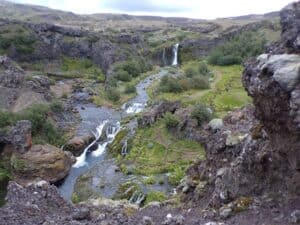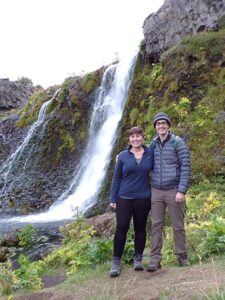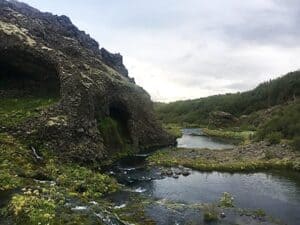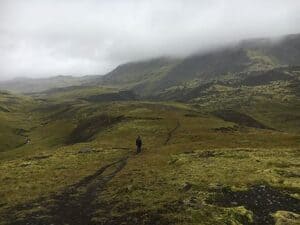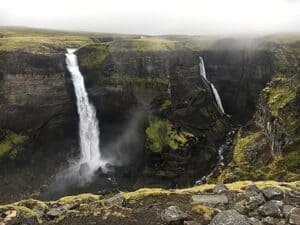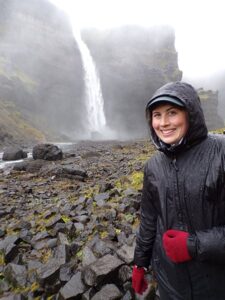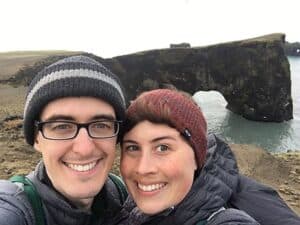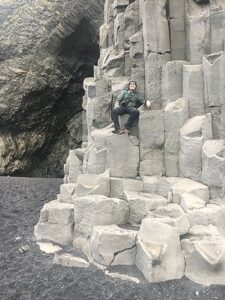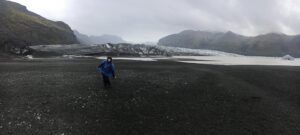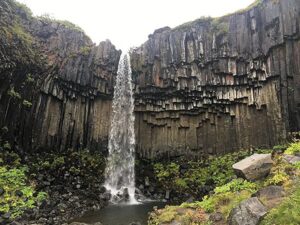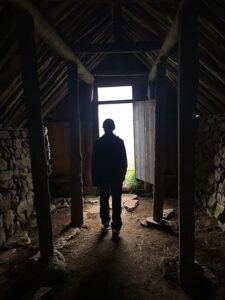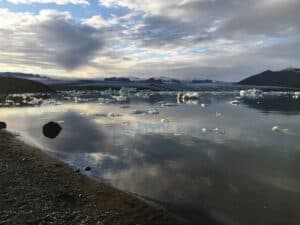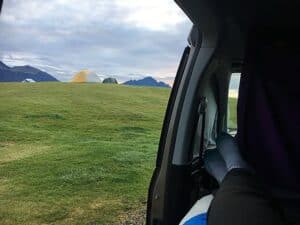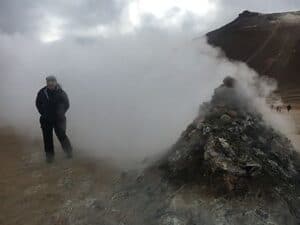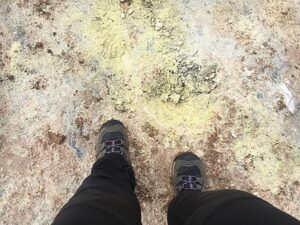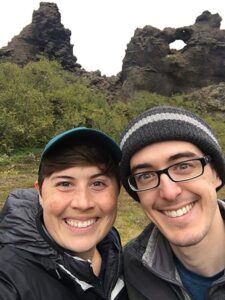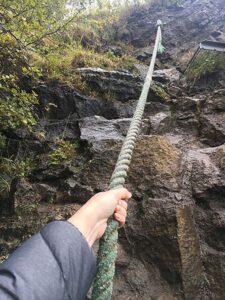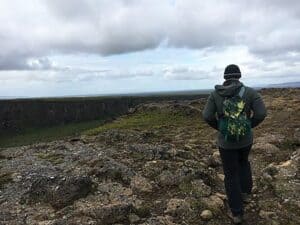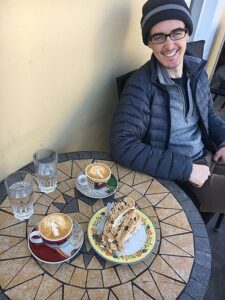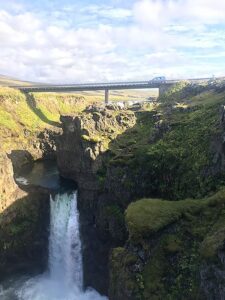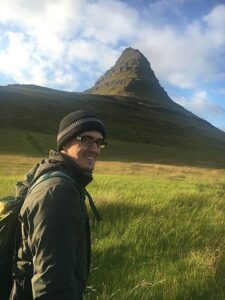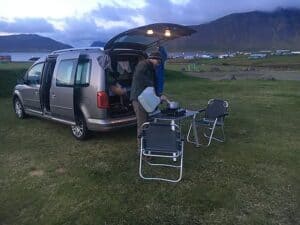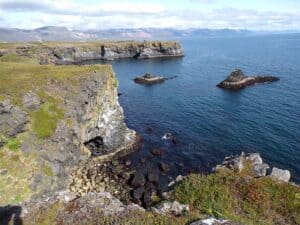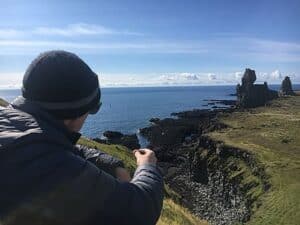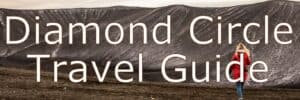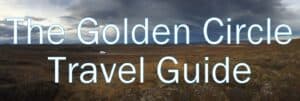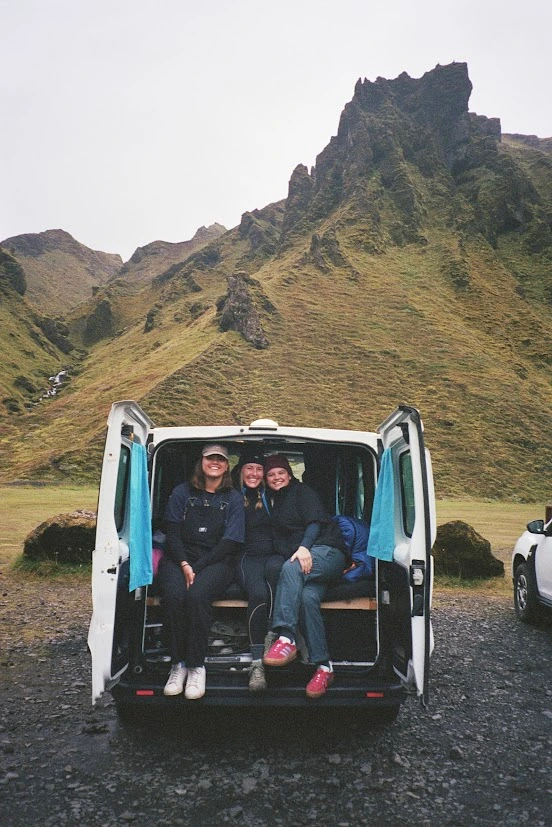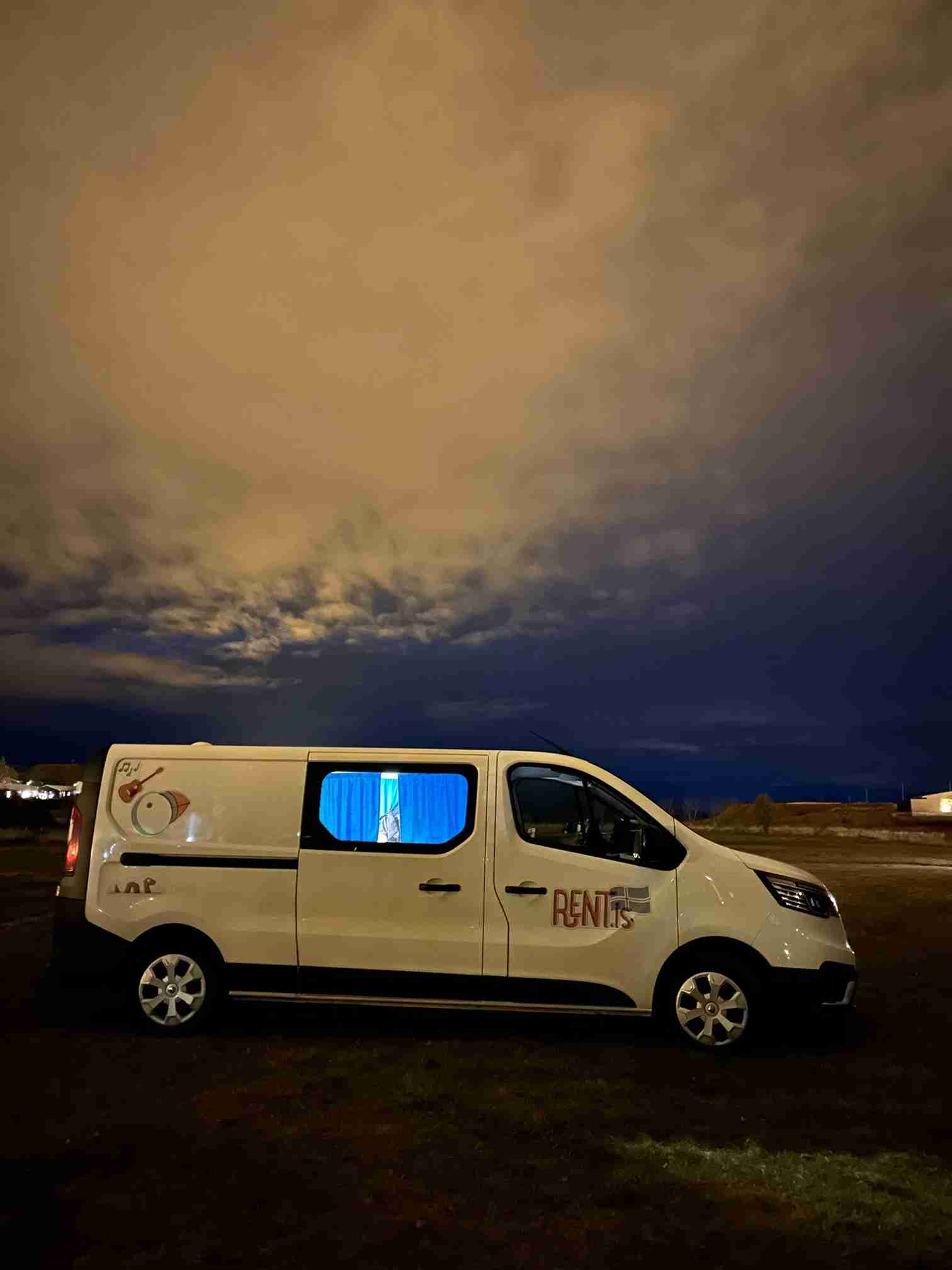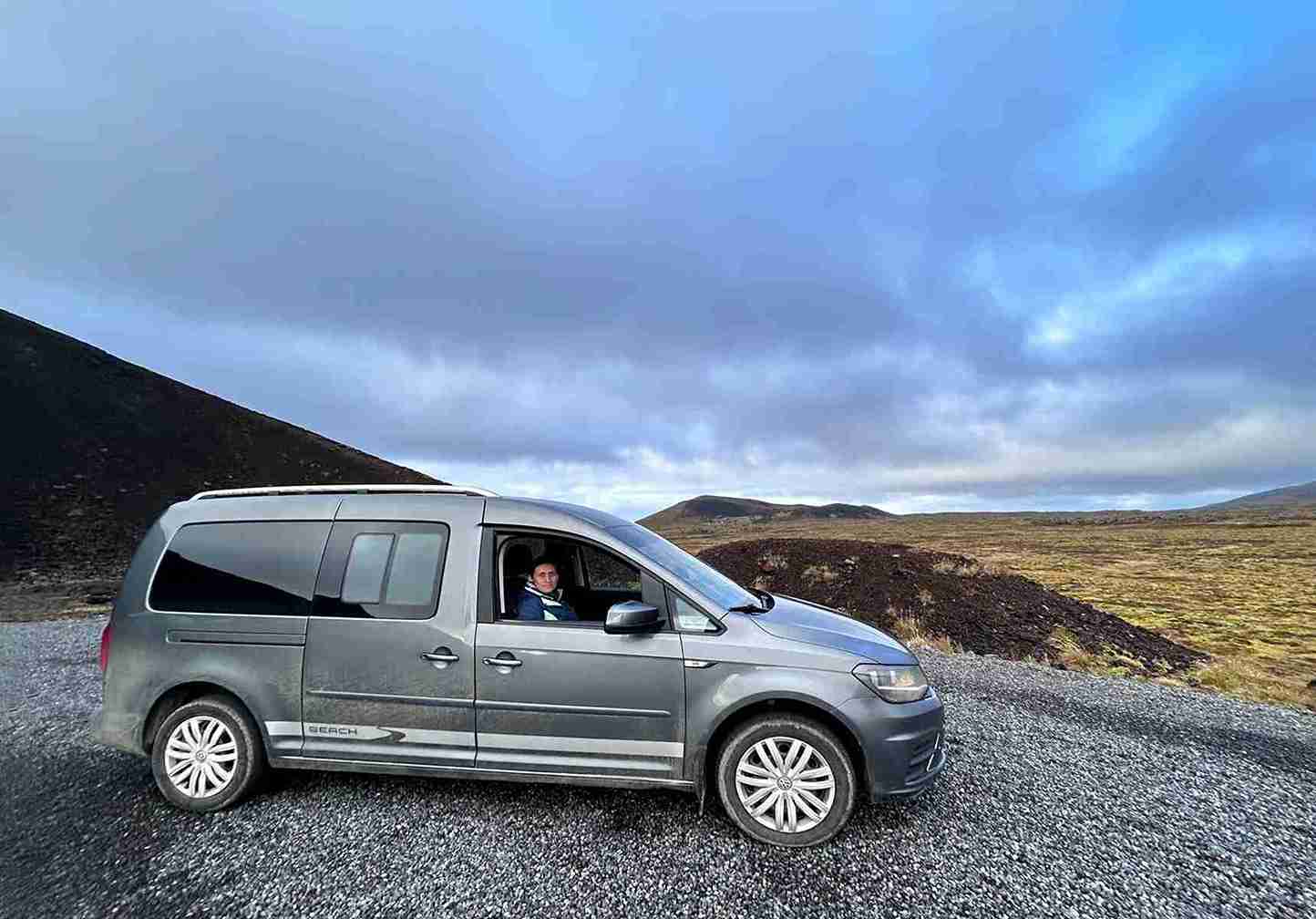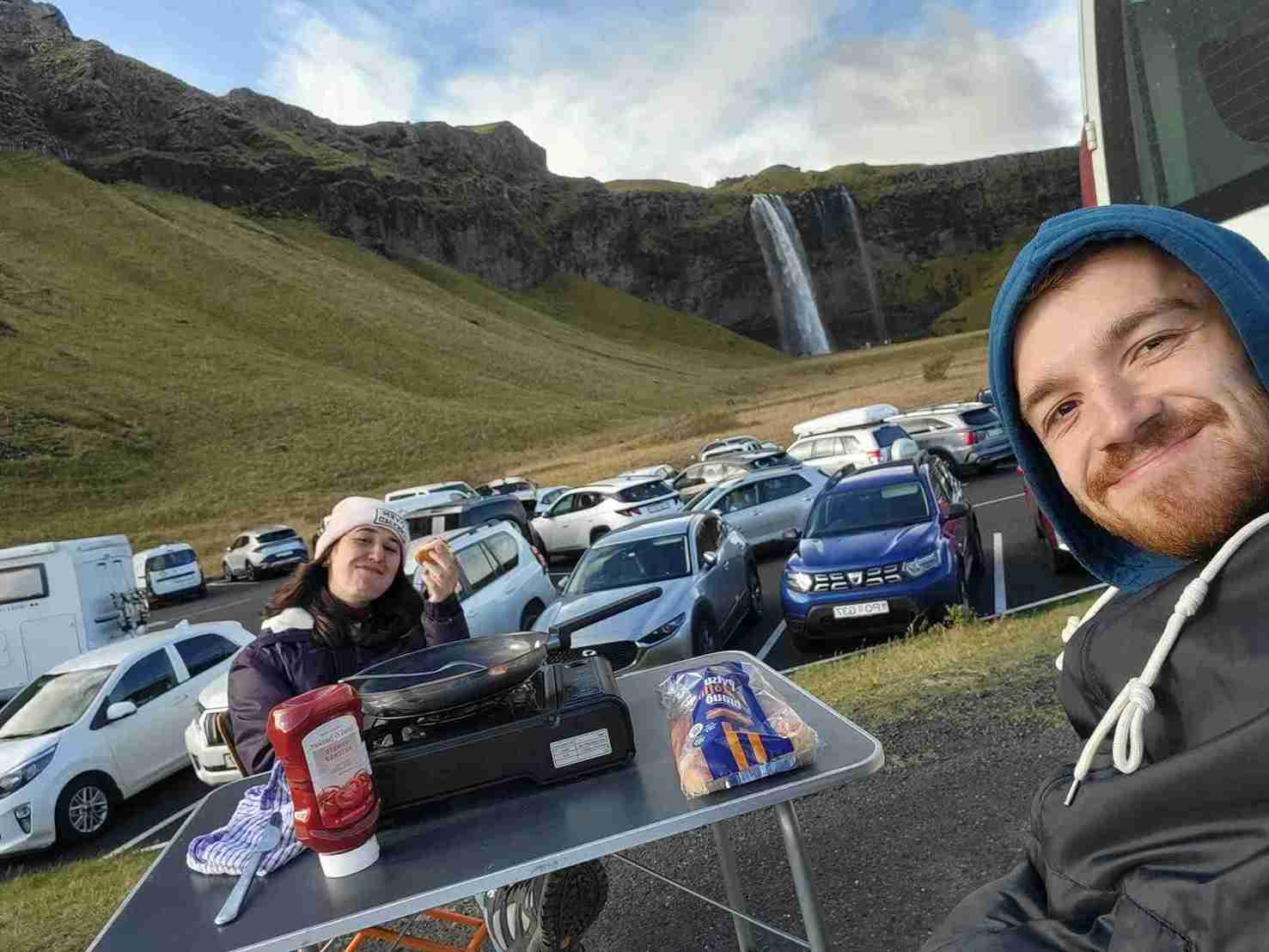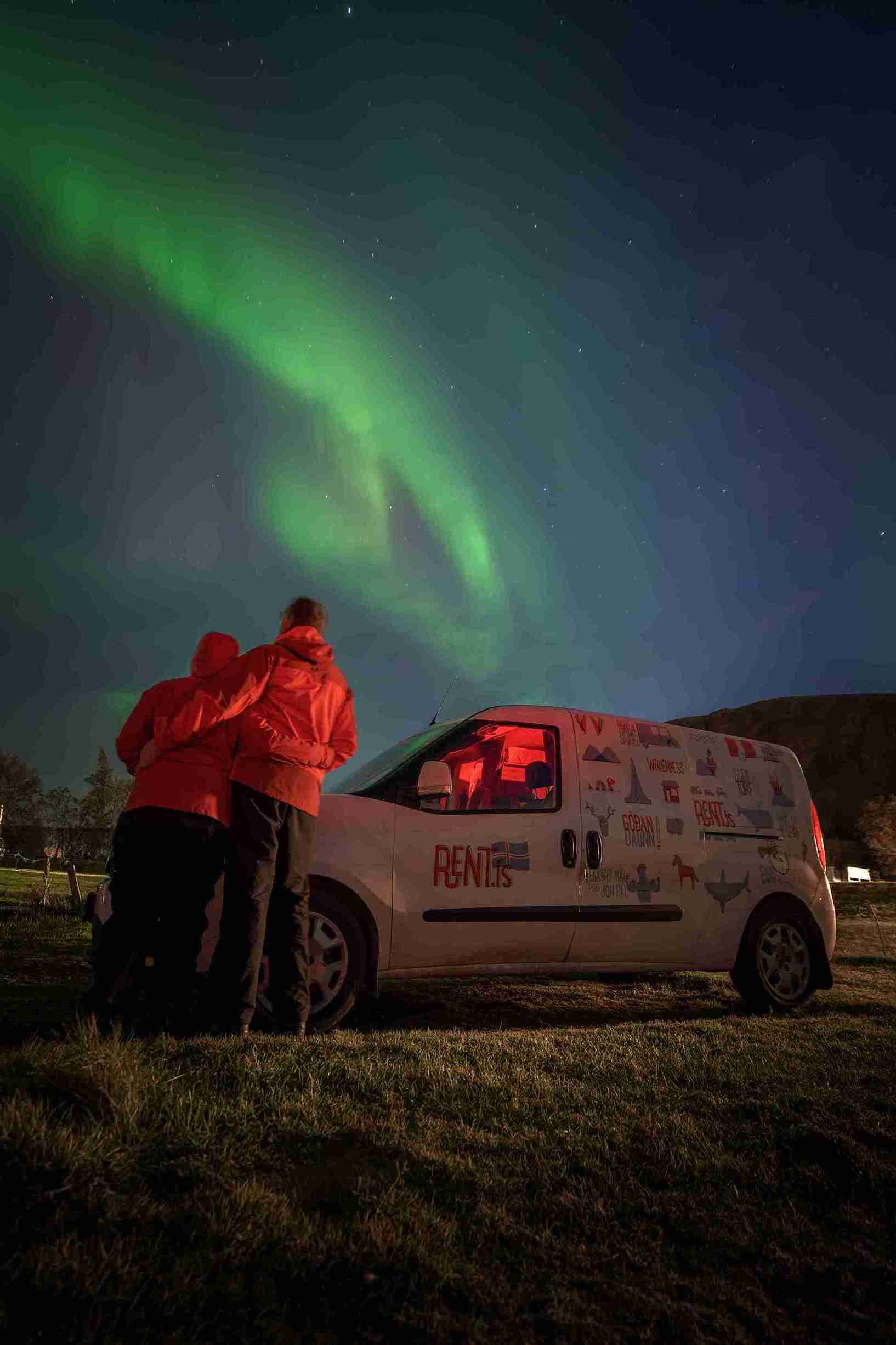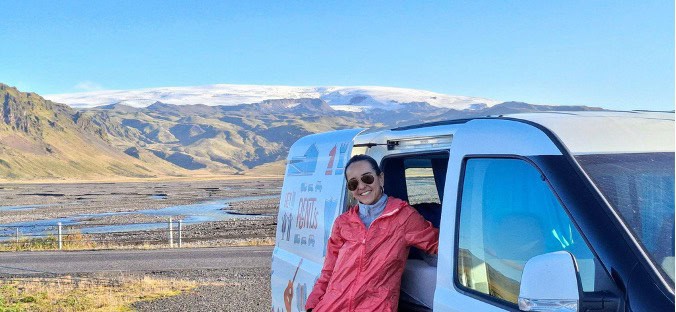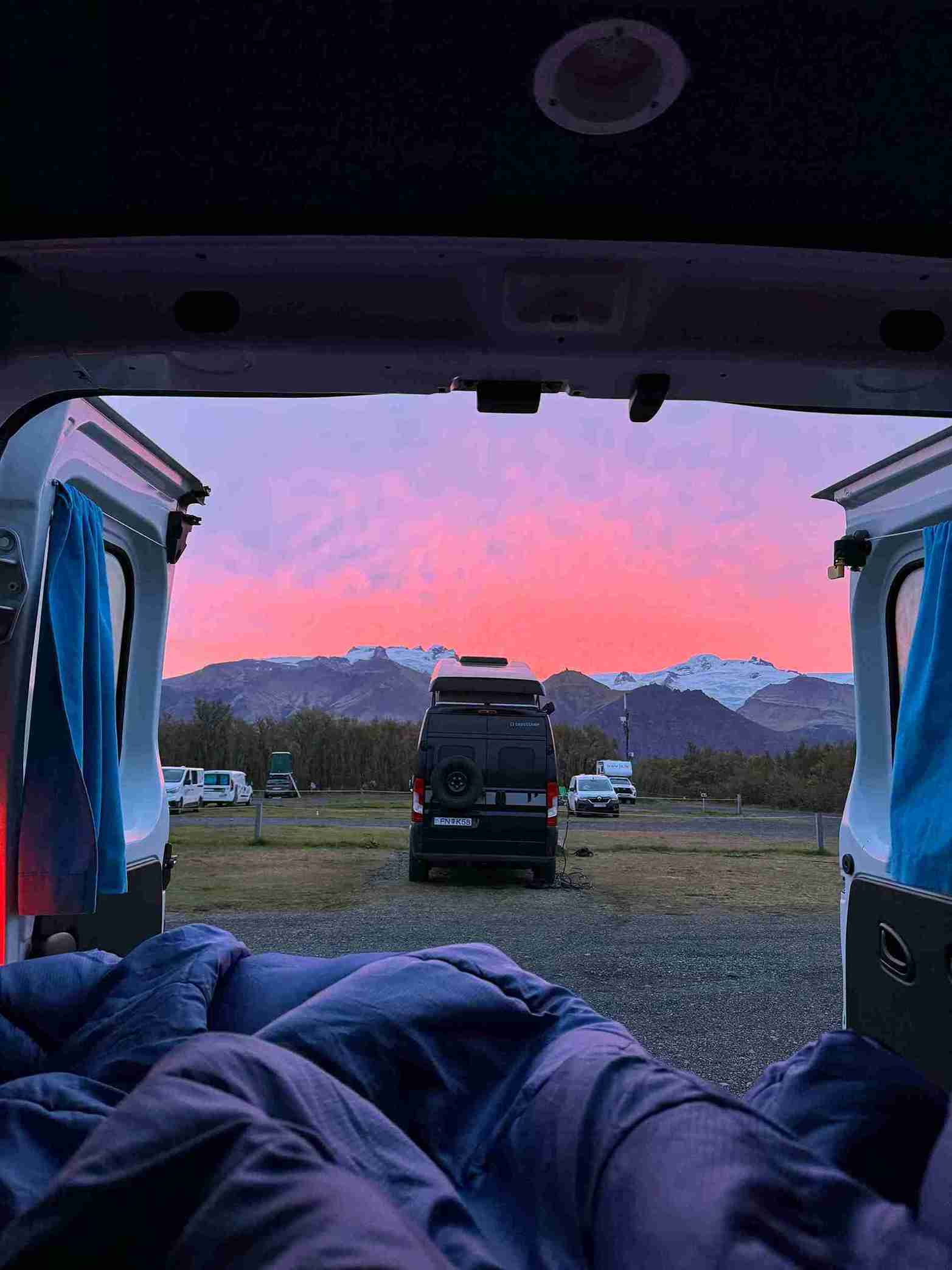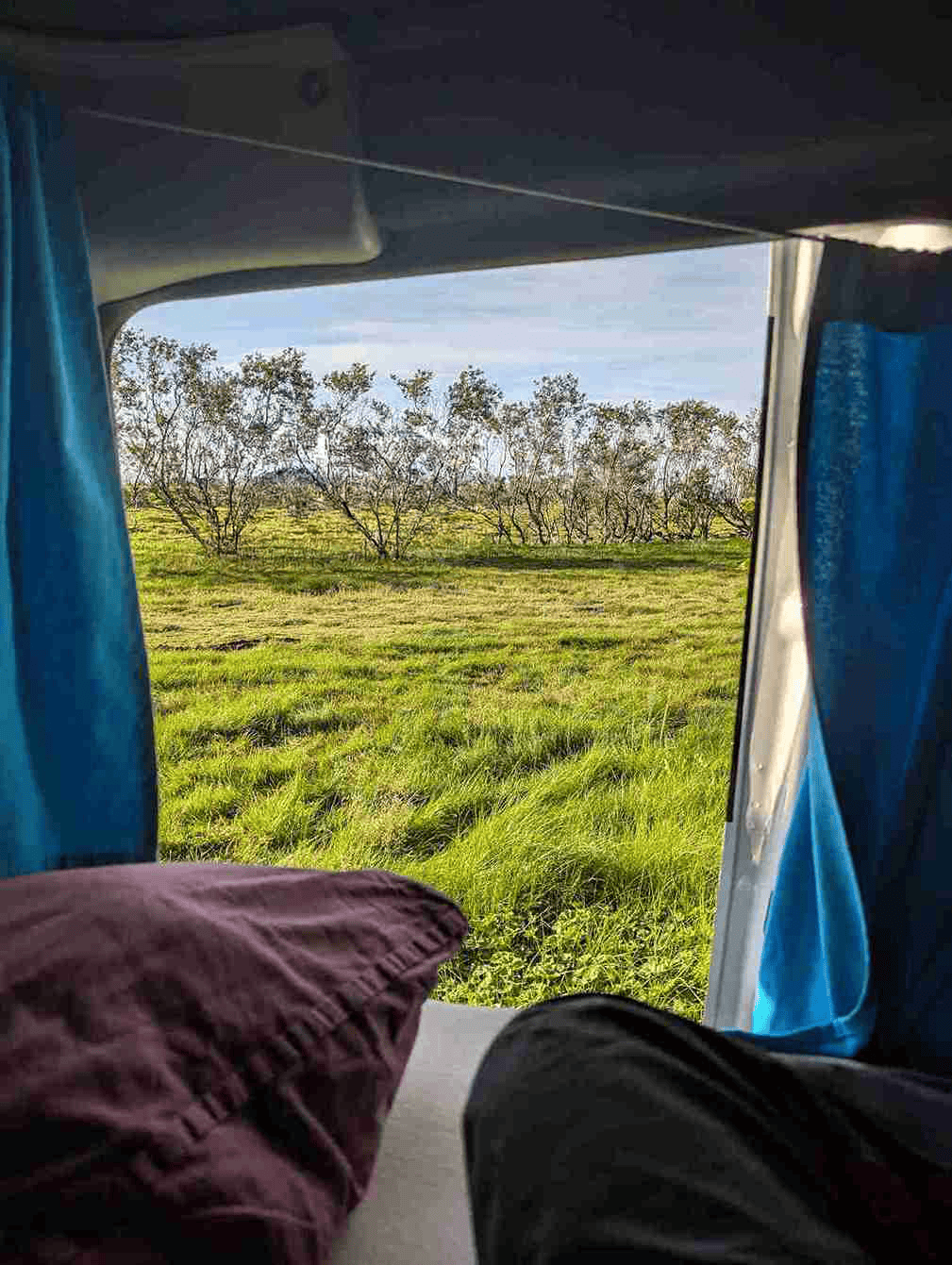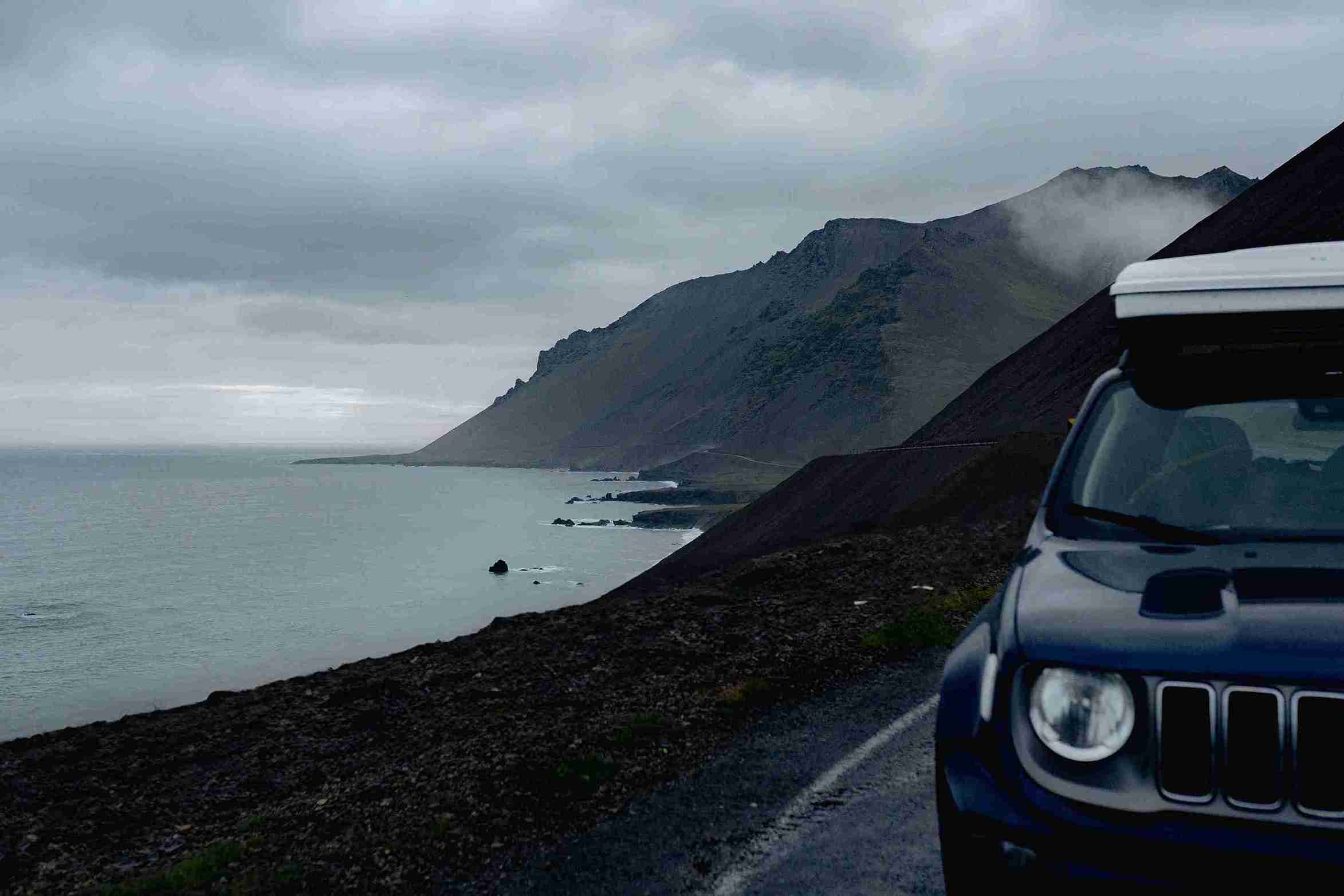Our first stopover in Iceland was brief — too brief. It was 2016 and we were en route to our European honeymoon. But those 12 hours of exploration left us wanting more. Two years later, we booked a second trip — and a camper van — that would take us around the entire perimeter of the island we’d come to love. This is the story of our eight-day journey along Ring Road.
Day 1: Underwater Adventure
After a near-sleepless flight from Baltimore, we were hardly fit to explore, but our first activity of the trip woke us up nicely. Snorkeling in the Silfra rift at Þingvellir was like nothing we could have imagined. The 57-degree air temperature was still 20 degrees warmer than the frigid water flowing from the glacier to the north. It was a rare kind of day — hardly a cloud in the sky. Sunlight flashed along the bottom of the rift’s sandy bed, and rocky ledges draped with fluorescent seaweed plunged into the earth on either side of us as we swam through deeper channels.
The above-ground views of Þingvellir National Park may not have had the same ethereal feel as Silfra’s icy depths, but they did not disappoint. The park lies sunken between the North American and Eurasian tectonic plates and is framed by jagged cliffs that rise out of the earth just north of Iceland’s largest lake. In 930 A.D., the Vikings met in the shadow of those cliffs to establish a parliament — one that would determine raiding grounds. Archaeological ruins of their booths can still be seen around Law Rock, which continued to serve as the site of parliament until it was moved to Reykjavik in the 1700s.
Travel tip: Always apply sunblock, even when it’s chilly. We learned this lesson the hard way.
Day 2: Lead Me to the Valley
After spending our first cozy night camping a stone’s throw from Þingvallavatn, we headed to Strokkur geyser in the Golden Circle. There, we were met with throngs of tourists from all over the world. Because Strokkur erupts every 8 to 10 minutes, we had plenty of chances to catch the action. A nearby bluff provided an excellent view — away from most of the crowds — and the hike made the popular attraction feel a bit more personal.
At Gullfoss, the powerful Hvítá river sent up a massive wall of mist that dusted our coats with freezing droplets as we made our way to the overlook. A nearby sign said the waterfall’s name was inspired by its golden hue, but we preferred a second theory: That a miserly farmer threw all his gold into the raging waters, preventing anyone from inheriting his fortune and giving the “Golden Waterfall” its name.
Our third stop of the day would prove to be our favorite destination of the entire trip. The peaceful valley of Gjáin sits at the end of a rocky, pitted F-road located far outside the Golden Circle. We parked our trusty camper van near Route 332 and set off on foot, passing no one but sheep as we trekked for more than 40 minutes through barren fields.
When the flat land gave way to lava-strewn hills, we took a detour to peer over the edge of the rise. A winding river and rich, green foliage hinted at what was to come, but we were still taken by surprise when we finally arrived at Gjáin. In front of us, the dull, brown landscape fell away to reveal a valley that seemed too perfect to be real. On the eastern edge, the river we’d seen earlier cascaded down the cliff face. Deep caves and tapered columns decorated massive boulders spread around the basin, and the bluest water I’d ever seen surged from a second waterfall set farther to the west. The verdant valley floor was even cut with small, wooden bridges crossing spring-fed streams. Viewed all at once, Gjáin looked as though some guiding hand had planned each feature with care. It was definitely worth the long, lonely hike to and from the camper van.
Travel tip: There’s always more than one way to view Iceland’s natural attractions. Explore a little, and you’ll find your own unique perspective.
Day 3: The Foot of the Falls
We began our adventure where we’d ended it the night before: parked just off Route 332. This time, we hoofed it to Háifoss, a secluded waterfall that plummets 122 meters into the gorge below. An orange trail marker caught our attention, and we set off through rolling sheep pastures, ignoring the steady rain. We didn’t pass a soul as we slid down steep, muddy slopes and scrambled over debris left by rock slides. Finally, the rise and fall of the narrow path led us all the way to the foot of Háifoss, where mist and rain mingled. The view was breathtaking.
A long drive brought us to Dýrhólaey arch late that same day. From the lookout point, we watched gulls and puffins soar over the empty beach before returning to their cliffside roosts. We even spotted a whale — it broke the surface of the water just below where we stood and then quietly slipped back to sea.
Nearby, the black sands of Reynisfjara were beautiful but crowded, and our final stop of the day was brief.
Travel tip: While Iceland’s much-photographed coastal attractions are popular for a reason, you have the wheels to rove, so why not spend more time off the beaten path?
Day 4: Glacial Wonders
Last night’s final push to reach Skaftafell certainly paid off this morning. Waking up in the park let us get an early start on the day. We began with an easy stroll to Skaftafellsjökull, where a frosty wind swept down off the glacier and out across the black-pebble beach. Deep, jagged cuts in the ice revealed slivers of the glacier’s rich, blue interior and added color to an otherwise gray day.
Our afternoon hike to Svartifoss showed off more of Iceland’s unique geology. Hexagonal basalt columns rose up on either side of the falls, while broken layers of rock lay scattered around the base. Later, the historic farm of Sel offered a peek into the island’s cultural past.
Jökulsárlón glacier lagoon, about an hour from Skaftafell, delivered our second glacial vista of the day. Invisible until you cross the ridge, the lagoon’s aqua-blue waters are home to hundreds of icebergs. We wandered along the shore, taking in the magnificent sight, and even glimpsed a seal bobbing along in the water.
Travel tip: Organization is key when you’re on the road day in and day out. Come up with a system so you can locate essentials quickly, and store clean and dirty clothes in separate packing cubes to reduce clutter.
Day 5: Magma Opus
Camping in the harbor town of Höfn meant we woke up to a view of Iceland’s mountainous southeastern shore — we didn’t even need to leave the van. After taking in the sights, we set off on a four-hour drive to the Mývatn region. We cruised past roadside waterfalls as we wound our way up the coastline. A gravel road led us into the highlands, which seemed to stretch on and on.
When we finally neared our destination, wafts of steam caught our eye and we veered off the road to explore Hverir, a geothermal zone at the base of the volcanic Mt. Námafjall. Of course, we couldn’t resist a good climb, so we soon found ourselves halfway up the muddy slope. At the top, we passed clusters of steam vents and trekked over vivid yellow soil before taking in a bird’s-eye view of Mývatn.
While the crater atop Hverfell volcano was certainly impressive, the lava formations at Dimmuborgir were this afternoon’s real gem. Unique in all the world, these irregular columns and arches took shape when steam vents opened up beneath a lava lake 2,300 years ago. Walking through them felt absolutely otherworldly.
Travel Tip: In Iceland, you’ll find unexpected surprises around every corner. Leave time in your itinerary for spontaneous stops — you’ll definitely make at least one.
Day 6: Life on the Edge
Road closures and construction forced us to improvise our sleeping arrangements last night, but that’s the beauty of traveling by camper van: You always have options. We ended up in Laugur, far from our original route, and had to make up time on the morning’s drive to Ásbyrgi canyon, the capstone of our trip. This stunning Diamond Circle attraction is said to be the sole hoof print left by Odin’s eight-legged steed, but the site’s geological explanation is just as fascinating: A glacial lake burst through a natural dam so forcefully that it carved out the whole canyon in a matter of hours.
After investigating the Ásbyrgi visitor center, we opted for the A7 trail, an up-and-back hike that promised first-rate views from the canyon’s eastern edge. A short ladder deposited us midway up the cliff face. We scaled the remaining slope in two tiers, gripping tightly to a thick rope that dangled from above. At the top of the canyon, a thin, muddy path traced the ridge, leading us to a viewpoint on Ásbyrgi’s very tip. We settled on a rock and munched on sandwiches while looking out over the unforgettable landscape.
After plenty more hiking, and a bit more driving, our night ended around the camp stove at a park near Akureyri resort town, which we couldn’t wait to explore the next morning.
Travel Tip: Iceland allows international visitors to bring a small amount of food into the country. Premeasuring ingredients at home saves you valuable time when it comes to prepping meals each evening.
Day 7: The Road to Kirkjufell
Pour-over coffee, heated on a camp stove, certainly has its charm, but we jumped at the chance to enjoy real cappuccinos in Akureyri. We settled at an outdoor table at a café overlooking the town’s main promenade, and split a slice of meringue cake while soaking in the sunshine.
Most of our day was dominated by the five-hour ride to Snæfellsnes Peninsula, but we did make time to stop at the scenic Koluglijúfur canyon not far off Ring Road. A slatted-wood bridge let us drive right over the waterfall — just another unique Icelandic experience.
Later that evening, deep into Snæfellsnes, we parked beside Kirkjufell and set off to find a path that would lead us up the mountain. A promising dirt road devolved into tire tracks through tall grass, so we veered off to follow one of the many faint trails dug out by grazing sheep. Eventually, we gave up on those paths, too, and made a beeline up the mountain, stepping over fences and deep, treacherous holes. At the next plateau, boot prints in the dirt gave us confidence we were finally on the right track. We edged along the fence line, feeling the incline grow steeper and steeper. Aware of the late hour, we scrambled up one final slope before resting to enjoy the view of Grundarfjörður and the distant coastline. Then, it was back down the mountain — a task that was easier said than done. In the end, we took to all fours to keep from slipping. A handful of sheep witnessed our triumphant return to flat ground and our march back to the camper van, parked at the nearby falls.
Travel Tip: You’ll spend at least 1,332 kilometers behind the wheel when driving Ring Road. Pop an audio-book into your van’s CD player and pass the time by learning about Viking history.
Day 8: Saying Goodbye
Kirkjufell mountain stood as the backdrop as we packed up the camper van on our final morning in Iceland. We weren’t ready to go home, but thankfully, we still had a few hours left to explore Snæfellsnes.
Debris from a 1948 shipwreck littered the pebbled beach on our stop at Djúpalónssandur. Scattered among the rusty metal sat smooth, over-sized stones that fishermen would once heft as a test of strength. Despite our best efforts, we couldn’t get one of the larger stones to budge; still, it was fun to try.
Down the road, at Arnarstapi, we went in search of Gatklettur arch, picking our way along a rocky coastal trail. While we never did spot Gatklettur, views of the peninsula’s jagged basalt cliffs — and the blue-gray mountains in the distance — meant our last hours in Iceland were well spent.
The drive back to the airport felt like a long farewell to this breathtaking island, but this wasn’t the first time we’d said goodbye to Iceland, and we felt certain it wouldn’t be the last.
Read more: Leaving your heart in Iceland
Happy Camping! #CamperStories
Iceland Travel Guides
If you like what you see, please subscribe to our YouTube channel!

